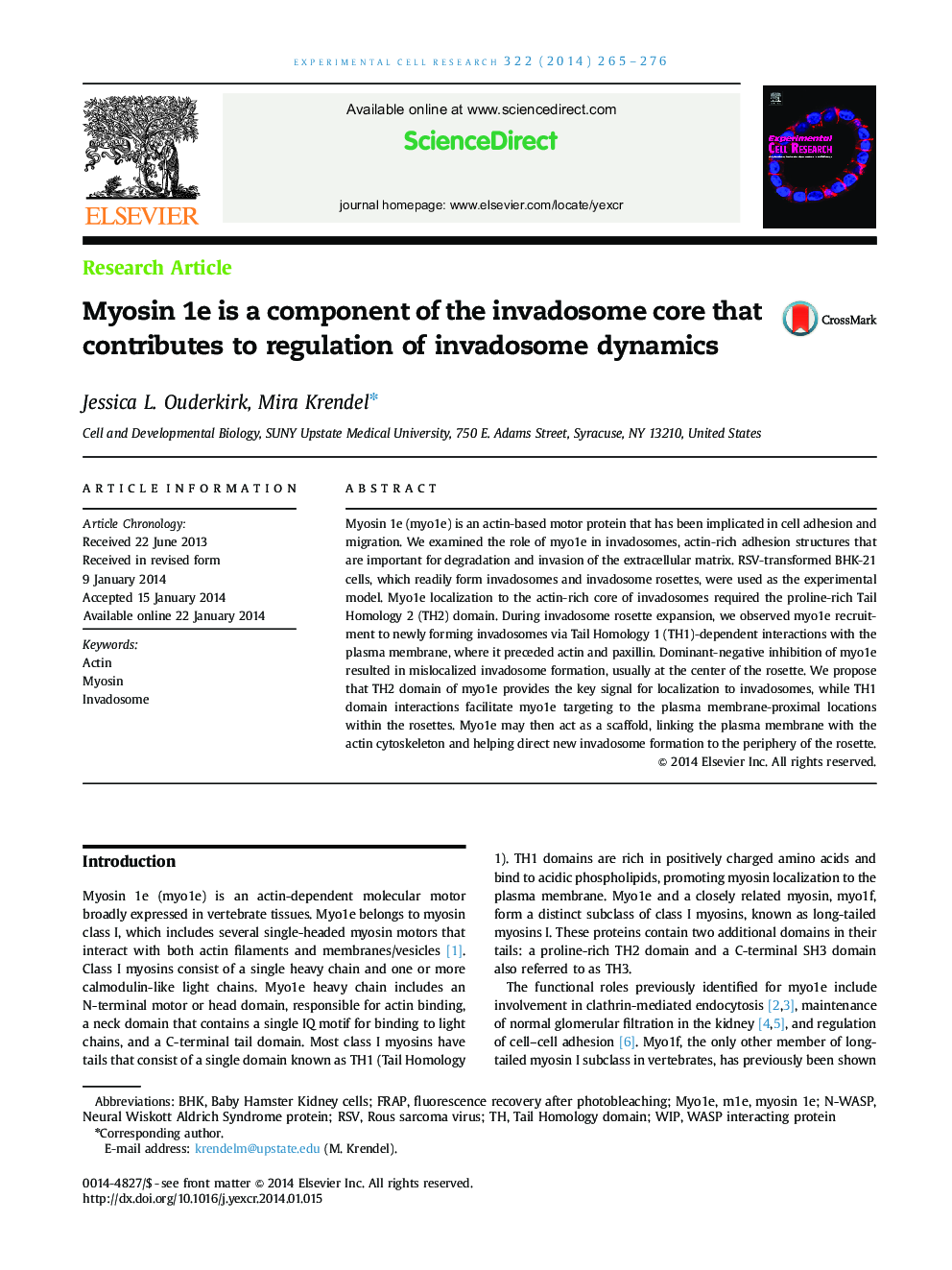| Article ID | Journal | Published Year | Pages | File Type |
|---|---|---|---|---|
| 10904141 | Experimental Cell Research | 2014 | 12 Pages |
Abstract
Myosin 1e (myo1e) is an actin-based motor protein that has been implicated in cell adhesion and migration. We examined the role of myo1e in invadosomes, actin-rich adhesion structures that are important for degradation and invasion of the extracellular matrix. RSV-transformed BHK-21 cells, which readily form invadosomes and invadosome rosettes, were used as the experimental model. Myo1e localization to the actin-rich core of invadosomes required the proline-rich Tail Homology 2 (TH2) domain. During invadosome rosette expansion, we observed myo1e recruitment to newly forming invadosomes via Tail Homology 1 (TH1)-dependent interactions with the plasma membrane, where it preceded actin and paxillin. Dominant-negative inhibition of myo1e resulted in mislocalized invadosome formation, usually at the center of the rosette. We propose that TH2 domain of myo1e provides the key signal for localization to invadosomes, while TH1 domain interactions facilitate myo1e targeting to the plasma membrane-proximal locations within the rosettes. Myo1e may then act as a scaffold, linking the plasma membrane with the actin cytoskeleton and helping direct new invadosome formation to the periphery of the rosette.
Keywords
Related Topics
Life Sciences
Biochemistry, Genetics and Molecular Biology
Cancer Research
Authors
Jessica L. Ouderkirk, Mira Krendel,
